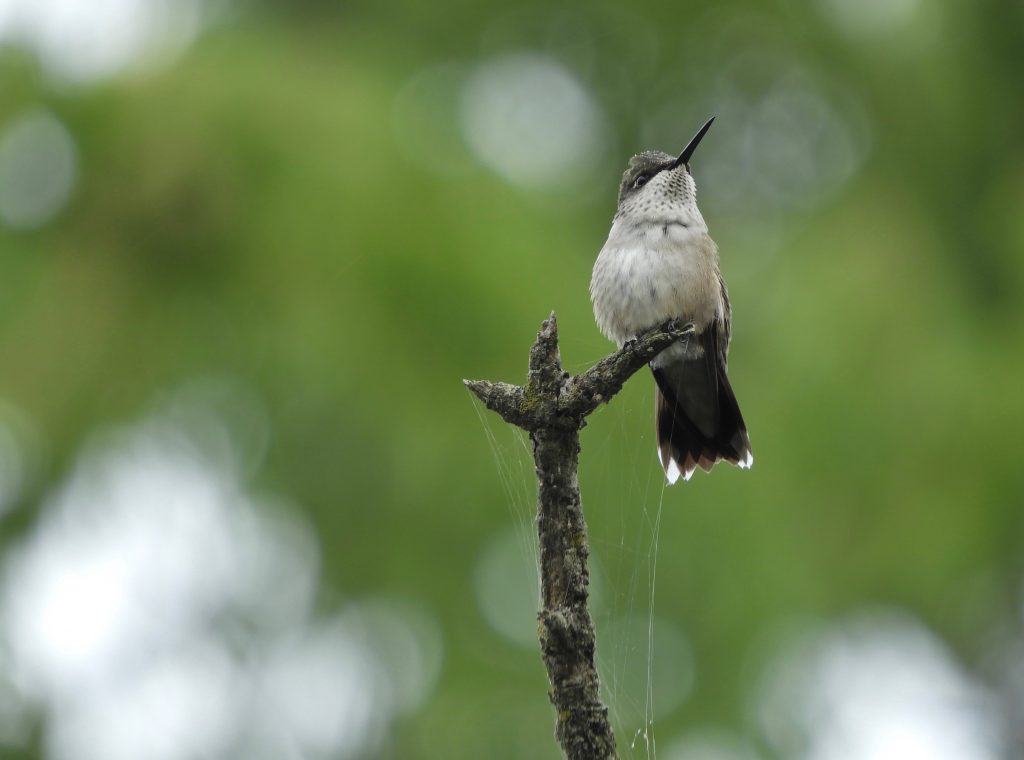
RBG. Hendrie Valley, Burlington ON. August 26 2020. On this morning’s walk around familiar trails, there was almost too much to choose from. Late August, slightly cooler weather and birds are on the move, these are the early days of what will become a flood of migrants heading south. I look at them and wonder how they know what they know; how does this five-iridescent-grams of a young Ruby-throated Hummingbird, know that it’s time to go to Panama? Science has teased out answers but not all of them, not the biggest one – how they know what they know.
The hummingbirds was one of several attention getters, there was also: a family group of Red–eyed Vireos – one of my favourite birds and one that I have not seen enough of this strange summer, a Warbling Vireo, a couple of Ospreys, one of them holding a flapping fish, and a beautiful young Green Heron stalking the length of a sodden log, peering and posturing, hoping to spearfish a late breakfast.
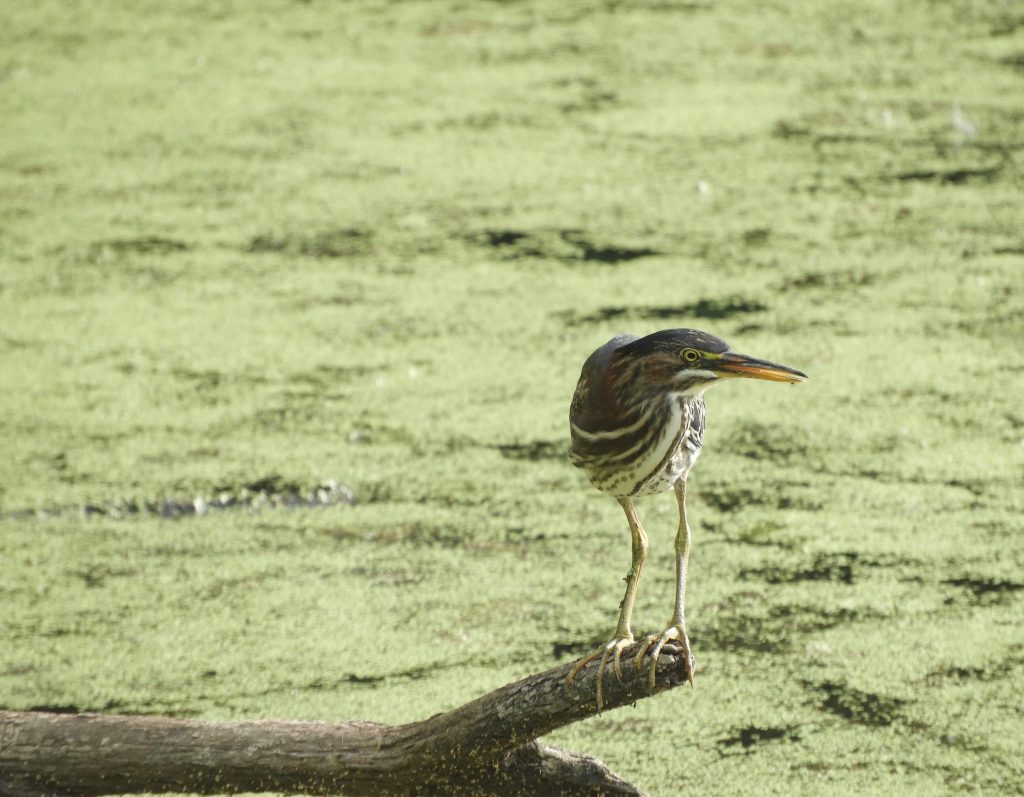
Warbler species can be a difficult identification challenge in fall. We found three: a small group of American Redstarts flitting and foraging, they are easy enough to identify at any time of year – as long as you can follow their constant movement; a lucky couple of photographs enabled us to identify a Blackburnian Warbler in its fall drabness, a striking contrast to the flaming orange beauty of spring; and two active Chestnut-sided Warblers – so utterly different now in fall plumage.
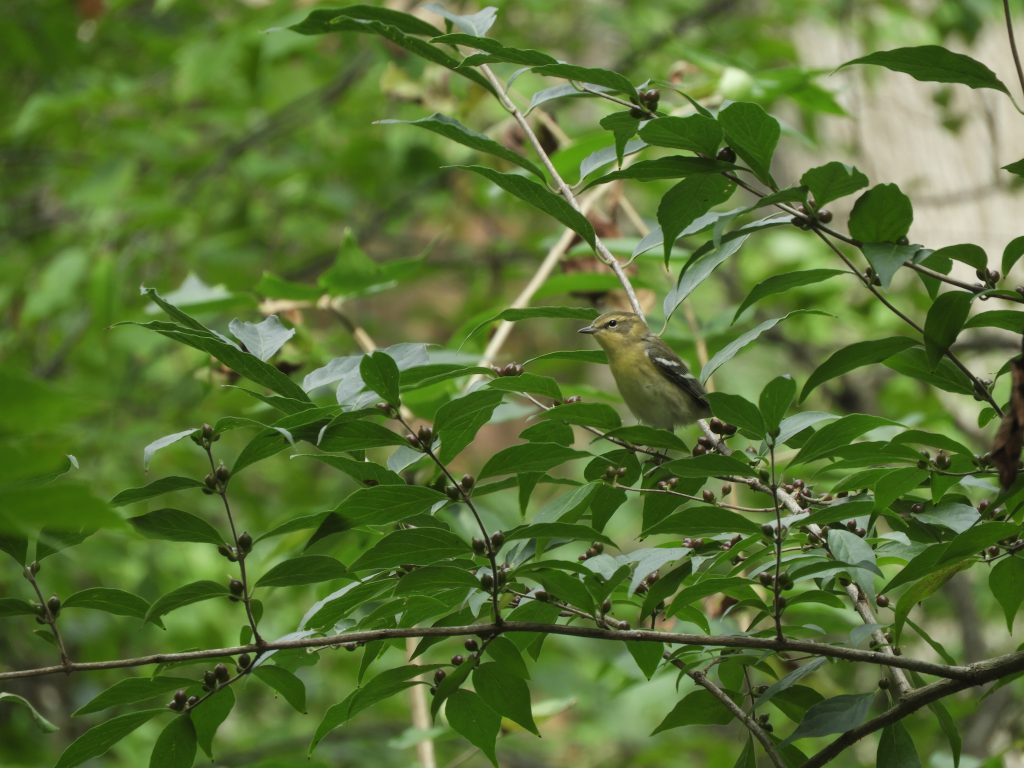
Quite unexpected was this Pied-billed Grebe. Maybe it’s the time of year or maybe it’s just a naive youngster, but Pied-billed Grebes are usually difficult birds to get close to. They prefer to keep their distance, and, if in the slightest bit threatened, retreat into pond-side vegetation or dive, sometimes slipping below the water like a submarine. Not this one though, it was on the edge of a too shallow pond, barely 5 metres from us and showed no alarm about our presence, conversation or movement.
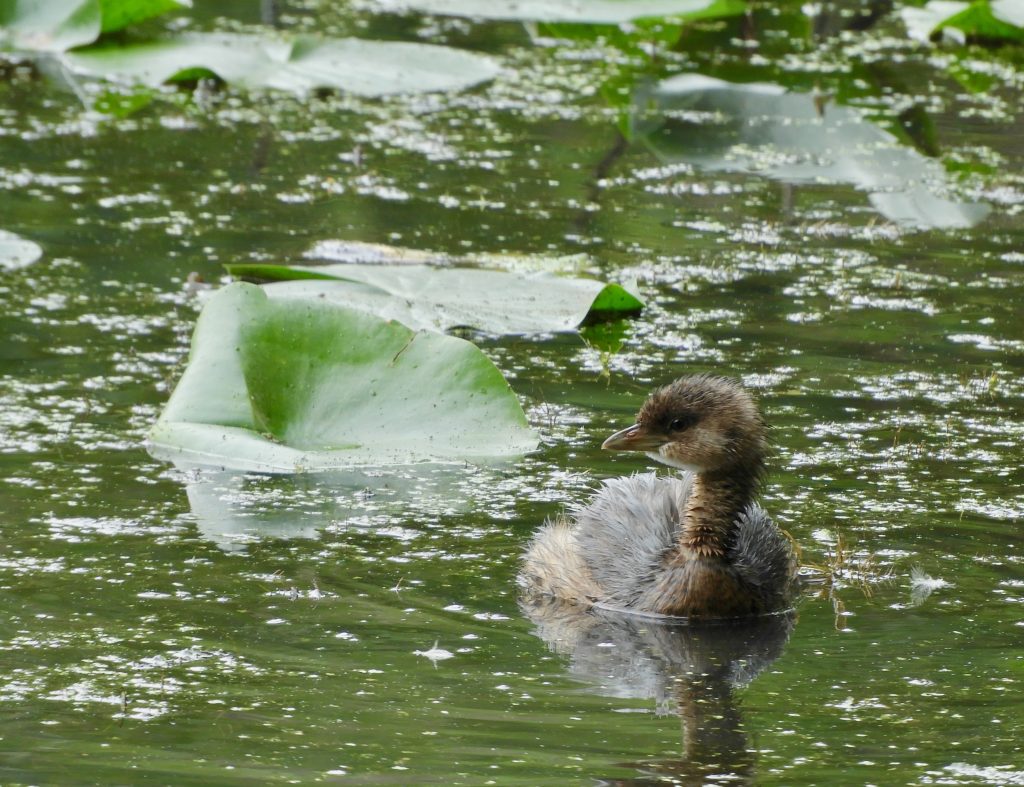
Our 3-hour morning hike turned up nearly 40 different species. All the familiars: Blue Jays, American Goldfinches, Gray Catbirds, Great Blue Herons and Hairy Woodpeckers included, but some intriguing specials too. The best of which could easily be the Pied-billed Grebe, the Blackburnian Warbler or Chestnut-sided Warblers, but I think My Bird of the Day would be this lovely young female Ruby-throated Hummingbird perhaps for the secrets she holds.
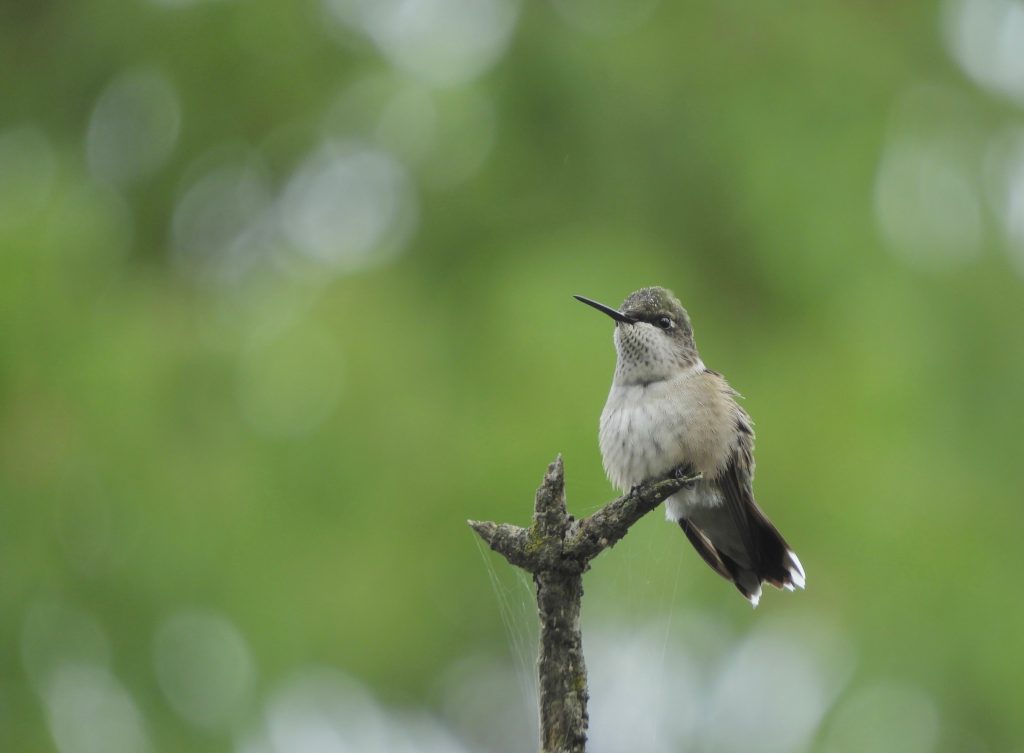
Excellent sightings Peter and a most illuminating report; made excellent and evocative reading. Passed through Brokenhurst last Sunday on our way to Lower Pennington / Keyhaven Marshes whilst sending last five days in UK with brother-in-law at his home in Warsash overlooking Hamble River and Southampton Water. 30 eclipse Eider ducks out on the Solent. Now about 4 hours away from the Spanish border in the high Pyrenees as we start our drive back home from south of Angouleme. Perhaps a vulture, Alpine Chough or even a Dipper as we head for Canfranc and Jaca for the night.
Thank you for this morning walk. I learned a lot and saw birds we don,t often see.